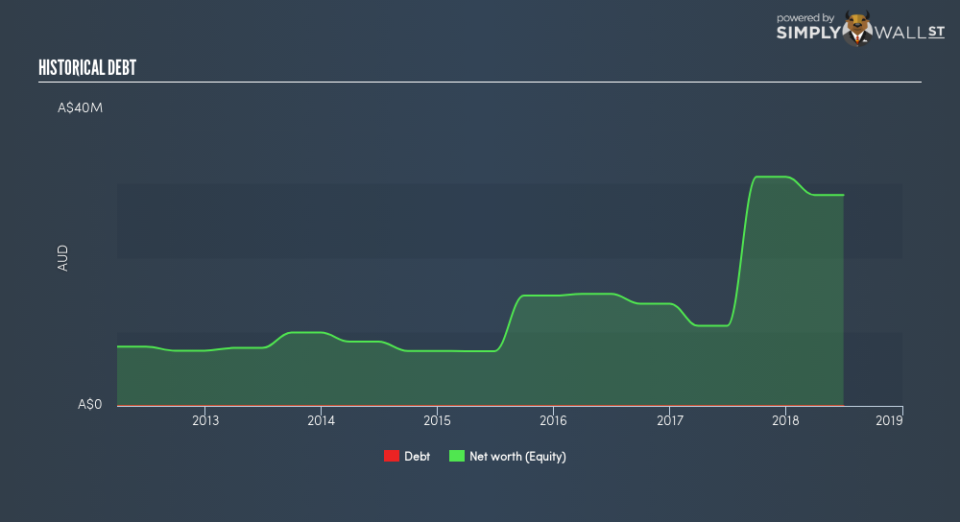Polynovo Limited (ASX:PNV): Time For A Financial Health Check

Polynovo Limited (ASX:PNV), which has zero-debt on its balance sheet, can maximize capital returns by increasing debt due to its lower cost of capital. However, the trade-off is PNV will have to follow strict debt obligations which will reduce its financial flexibility. While PNV has no debt on its balance sheet, it doesn’t necessarily mean it exhibits financial strength. I recommend you look at the following hurdles to assess PNV’s financial health.
View our latest analysis for Polynovo
Want to help shape the future of investing tools and platforms? Take the survey and be part of one of the most advanced studies of stock market investors to date.
Is PNV growing fast enough to value financial flexibility over lower cost of capital?
There are well-known benefits of including debt in capital structure, primarily a lower cost of capital. However, the trade-off is debtholders’ higher claim on company assets in the event of liquidation and stringent obligations around capital management. PNV’s absence of debt on its balance sheet may be due to lack of access to cheaper capital, or it may simply believe low cost is not worth sacrificing financial flexibility. However, choosing flexibility over capital returns is logical only if it’s a high-growth company. PNV delivered a strikingly high revenue growth of 58% over the past year. Therefore, the company’s decision to choose financial flexibility is justified as it may need headroom to borrow in the future to sustain high growth.
Does PNV’s liquid assets cover its short-term commitments?
Since Polynovo doesn’t have any debt on its balance sheet, it doesn’t have any solvency issues, which is a term used to describe the company’s ability to meet its long-term obligations. But another important aspect of financial health is liquidity: the company’s ability to meet short-term obligations, including payments to suppliers and employees. With current liabilities at AU$1.2m, it seems that the business has been able to meet these obligations given the level of current assets of AU$26m, with a current ratio of 21.44x. However, a ratio greater than 3x may be considered high by some.
Next Steps:
Having no debt on the books means PNV has more financial freedom to keep growing at its current fast rate. Since there is also no concerns around PNV’s liquidity needs, this may be its optimal capital structure for the time being. In the future, its financial position may be different. Keep in mind I haven’t considered other factors such as how PNV has been performing in the past. I suggest you continue to research Polynovo to get a better picture of the stock by looking at:
Future Outlook: What are well-informed industry analysts predicting for PNV’s future growth? Take a look at our free research report of analyst consensus for PNV’s outlook.
Historical Performance: What has PNV’s returns been like over the past? Go into more detail in the past track record analysis and take a look at the free visual representations of our analysis for more clarity.
Other High-Performing Stocks: Are there other stocks that provide better prospects with proven track records? Explore our free list of these great stocks here.
To help readers see past the short term volatility of the financial market, we aim to bring you a long-term focused research analysis purely driven by fundamental data. Note that our analysis does not factor in the latest price-sensitive company announcements.
The author is an independent contributor and at the time of publication had no position in the stocks mentioned. For errors that warrant correction please contact the editor at editorial-team@simplywallst.com.


